
More Helpful Content
Shipping fragile items requires special care and attention to prevent damage during handling, transportation, or storage. Fragile items can include a wide range of products, such as glassware, ceramics, electronics, artwork, and musical instruments. Properly shipping these items is crucial for ecommerce businesses to maintain customer satisfaction, minimize return rates, and promote their reputation. Ensuring the right packaging materials, techniques, and labeling are used are key factors in ensuring that delicate goods arrive at their destination intact and in perfect condition.
Fragile items refer to objects or products that are delicate, easily breakable, or susceptible to damage during handling, transportation, or storage. These items can vary widely in nature and include, but are not limited to:
In essence, fragile items encompass anything that requires special care and attention to prevent damage, breakage, or deformation. Handling fragile items involves using appropriate packaging materials, employing gentle handling techniques, and selecting reliable shipping methods to ensure they reach their destination intact.
👉 Read More: What is Cross-border Shipping? A Complete Guide for eCommerce Businesses
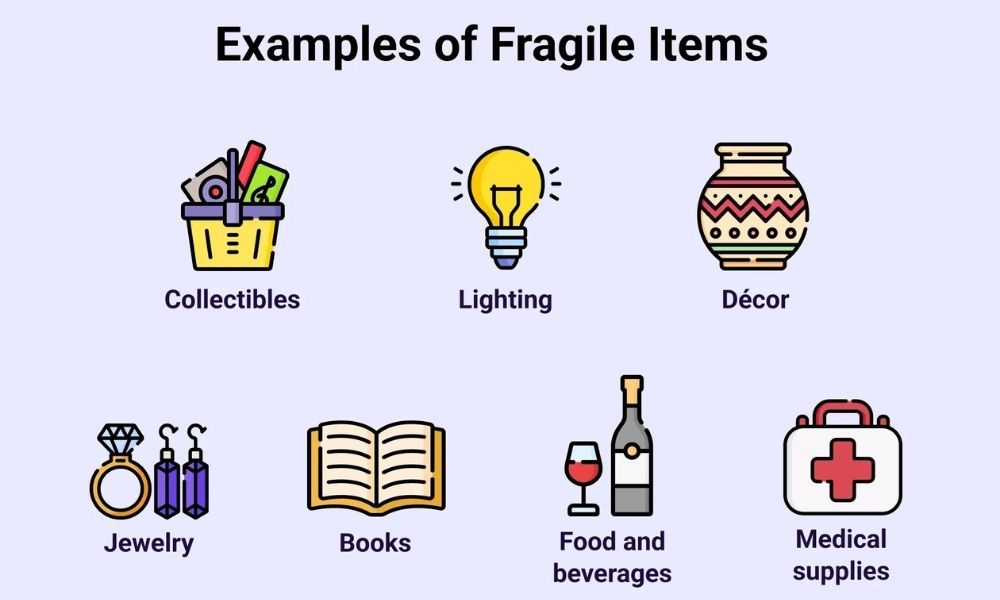
Ecommerce businesses must be exceptionally cautious when fulfilling fragile items due to several critical reasons:

Overall, the careful fulfillment of fragile items is essential for ecommerce businesses to protect their reputation, minimize financial risks, and maintain high levels of customer satisfaction. By prioritizing proper packaging, handling, and shipping procedures, ecommerce businesses can safeguard fragile items and enhance the overall shopping experience for their customers.
The process of packing fragile goods for shipment can be complicated. Below, EFEX’s experts have consolidated the most crucial knowledge and steps you need to best protect your delicate items.
The outer packaging materials for fragile items play a vital role in protecting them from damage during transit. Here are some commonly used outer packaging materials:
| External Packaging Type | Use Case | Example |
Cardboard Boxes (double-walled, heavy-duty, etc.) | Widely applicable to diverse goods. |  |
Corrugated Boxes (boxes with boxes a fluted inner layer sandwiched between two flat layers) | Electronics, delicate machinery, glassware, artwork… |  |
Padded Envelopes (with built-in padding made from bubble wrap or foam) | For smaller fragile items such as jewelry or electronic components, etc. | 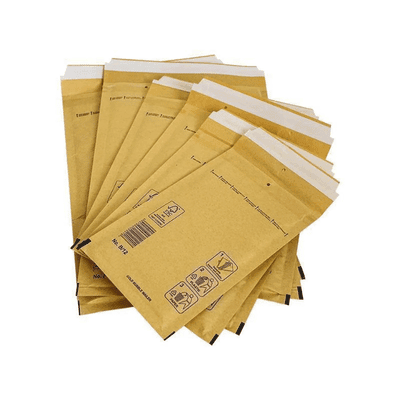 |
| Wooden Crates | For exceptionally fragile or valuable items, such as artwork, antiques, or collectibles. |  |
Plastic Containers (or bins with secure lids) | Electronics, pharmaceuticals, food, sensitive equipment… |  |
Inner packaging materials for fragile items are designed to provide cushioning and protection against shocks, vibrations, and compression during transit. Here are some commonly used inner packaging materials:
| Internal Packaging Type | Use Case | Example |
Bubble Wrap (plastic sheets with air-filled bubbles) | Ideal for wrapping delicate items such as glassware, ceramics, electronics, and small appliances. |  |
Foam Padding (polyethylene foam or foam peanuts) | Suitable for fragile items with irregular shapes or delicate surfaces, such as artwork, sculptures, electronics, and furniture. |  |
Packing Paper (butcher paper or kraft paper) | Dishes, glassware, porcelain figurines, framed artwork, etc. |  |
Air Pillows (inflatable plastic cushions) | Provide additional cushioning for fragile items such as electronics, small appliances, and delicate decor items. |  |
Custom Inserts (styrofoam inserts or blocks that can be custom-cut to fit the shape of the fragile item) | Fragile items with unique shapes or delicate components, such as electronics, musical instruments, and scientific equipment. It is also good for smaller bottles of perfumes, essential oils, etc. |  |
Dividers (cardboard partitions or foam inserts) | Glassware sets, dishware, collectibles… |  |
Corner Protectors (typically made from cardboard or foam) | Particularly useful for items with sharp corners or vulnerable edges, such as framed artwork, mirrors, and furniture. | 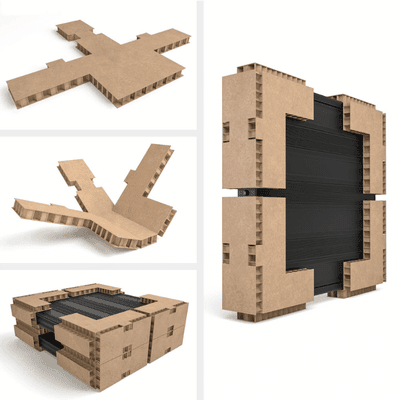
|
Ensure that there are no empty spaces within the packaging box by filling them with additional cushioning materials. This prevents items from shifting or moving around during transit, reducing the risk of breakage.
Pay special attention to fragile areas of items, such as corners, edges, or delicate components. Add extra layers of cushioning or padding to these areas to provide additional protection against impacts.
Place items in the center of the box, ensuring they are at least 6 cm away from outer walls and corners. This spacing helps protect items and should be considered when selecting the box size.
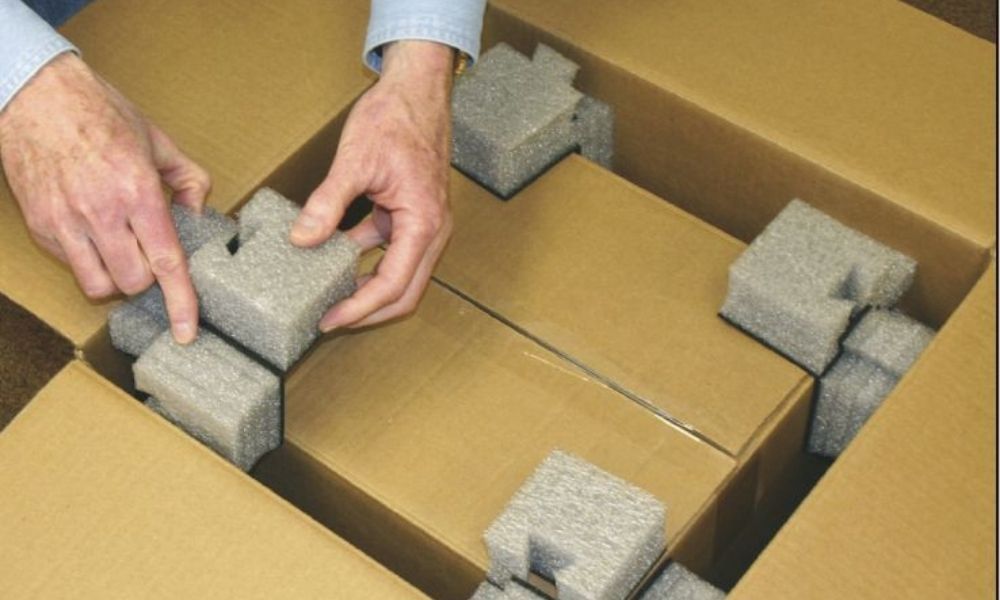
Begin by wrapping each fragile item individually using protective materials such as bubble wrap, packing paper, or foam padding. This prevents items from coming into direct contact with each other, reducing the risk of damage from rubbing or impact.

For shipments containing multiple fragile items, consider using dividers or separators within the packaging box to create individual compartments. This helps to keep items separated and immobilized during transit, minimizing the risk of breakage.

For delicate items, the box-in-box method is highly recommended. Opt for a secondary outer box that is 14 cm larger than the inner box to ensure additional protection. Double-walled cardboard boxes or corrugated boxes provide superior durability and safety during shipping. If you need to use a single-walled box, ensure it is sufficiently sturdy to bear the weight of its contents. Position the inner box at the center of the outer box, and fill any leftover space with cushioning materials.

Clearly label the package as containing fragile items using easily recognizable fragile stickers or labels. This alerts handlers to exercise caution when handling the package and helps prevent mishandling during transit. It should be noted that any special handling label must be applied by the shipper prior to courier collection.

Below are generalized guidelines curated by EFEX for shipping various fragile items. It is noteworthy that these guidelines are strictly for reference; the actual process can be quite complicated, and additional precautions are often needed for each specific case.
| Examples | Suggested Packing Guidelines | Labeling |
| Food in general:
Perishable Items:
|
|

| Examples | Suggested Packing Guidelines | Labeling |
| Plants:
Musical Instruments:
|
|

| Examples | Suggested Packing Guidelines | Labeling |
| Posters and Artwork:
Thin Metal Sheets:
Fabric Rolls:
|
|

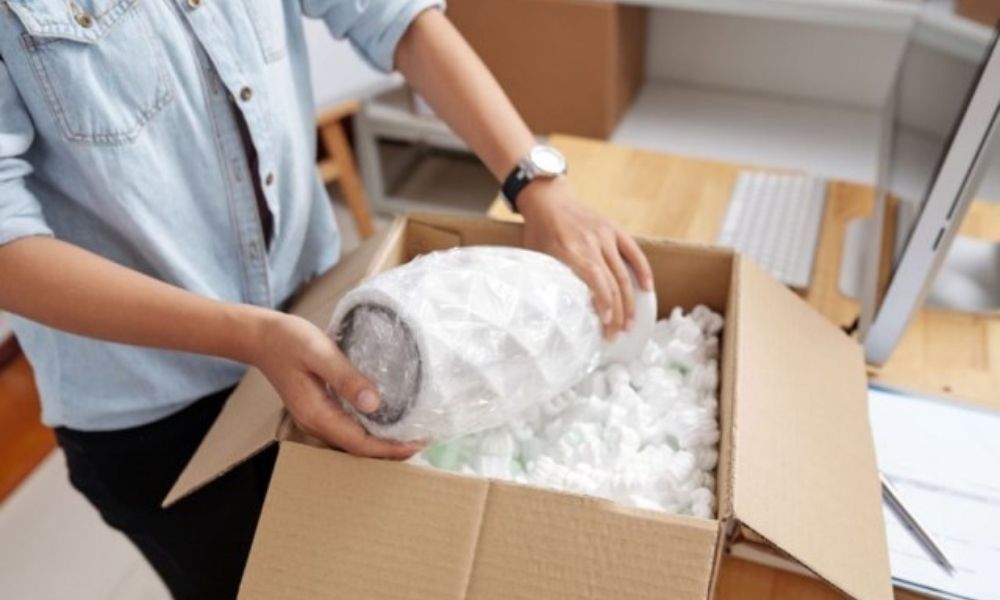
At EFEX, we understand the details involved in shipping fragile goods and offer specialized support to safeguard your items throughout their journey. Businesses should choose EFEX’s Fragile Item Handling Solutions for their proven track record and notable strengths:
👉 Read More: How to international shipping from Vietnam with cheapest cost?
👉 Read More: Shipping to Vietnam From USA?
Shipping fragile items correctly is essential for maintaining high customer satisfaction and reducing financial risks for ecommerce businesses. By using appropriate packaging materials, implementing effective packing techniques, and clearly labeling shipments, you can ensure that delicate items are well-protected during transit. Investing in proper shipping practices not only protects the items but also enhances the overall customer experience, fostering trust and loyalty in your brand. If you are running your ecommerce business and struggling with the complexity of shipping fragile items, EFEX’s experts are here to help!


